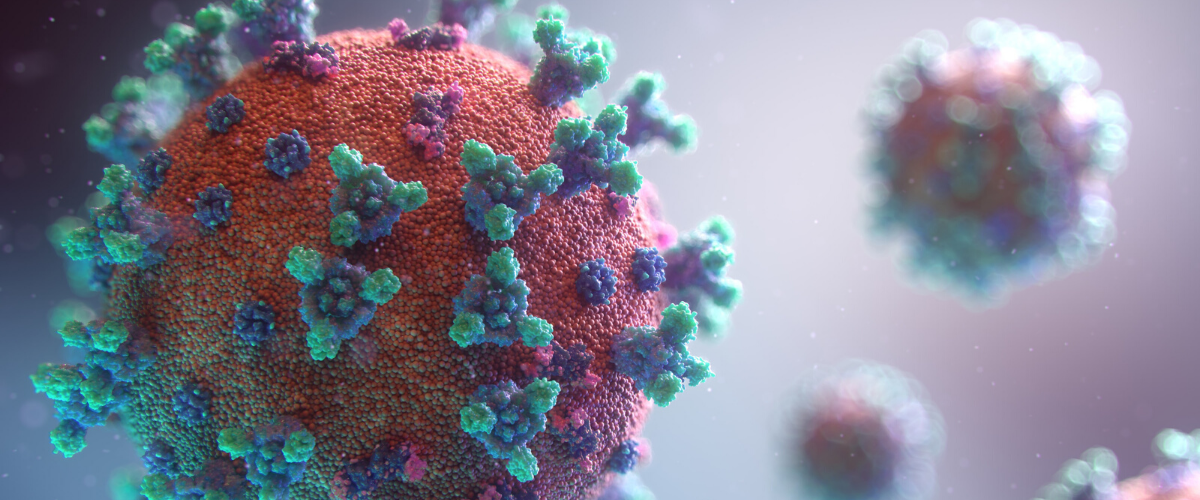What’s the difference between outbreak, epidemic, and pandemic?
An outbreak is a sudden rise of cases of, i.e. people with an infection in a particular location or area, or within a particular population. An outbreak gets deemed out of control once the chain of transmission is harder to determine and there are less obvious links between people who become ill. This signals the wider spread of a disease. An epidemic is a large outbreak.
A pandemic is then essentially a global epidemic.
Terminology
Let’s break down some other terms you may be hearing right now:
- Basic reproduction number (R0): You’ve likely heard talk of this, verbalized as the “R-naught”. This indicates how infectious a disease is. It tells us how many people an average contagious person may infect. For example, measles is highly infectious with an R0 of 12-18. This means that a person who has measles may spread it to 12-18 others (barring immunity or preventive measures). The current R0 of COVID-19 is estimated to be between 2-3; however, R0 estimates can change over time because outbreak dynamics are difficult to determine in real-time, infection control measures impact it, and R0 is situation-dependent, depending on the susceptibility of a population. The current R0 may therefore change as more evidence becomes available.
- Social distancing: This actually means creating both physical and social distance between people. Physically, people should stay at least 6 feet apart, and not have any contact when greeting one another. Socially, cancelling of events, avoiding crowds, and working from home are examples that keep us distanced. This helps because COVID-19 is spread by human contact, specifically via droplets that get into our respiratory system and make us sick. It’s the responsibility of everyone, whether sick or healthy, or if you think COVID-19 won’t make you very sick, to undertake these measures. Because even if you don’t have severe symptoms, vulnerable people will. We must protect our vulnerable populations.
- Incubation period: This is the time between exposure to an infectious agent and the appearance of symptoms. Current evidence suggests that for COVID-19, this period is 14 days, which is why self-isolation for 14 days after travelling is recommended right now. There remains unknowns about COVID-19, however, much research is underway.
- Endemic: A disease is considered endemic (i.e. opposite of pandemic) when it regularly exists in a place or population and occurs at a predictable or baseline rate. For example, malaria is endemic to parts of Africa, naturally and consistently affecting certain populations.
- Case: A case is a person with the infection. When public health professionals talk about case counts, they are talking about the number of people infected.
- Cluster: A group people with an infection or disease, grouped in space and time. An example would be a group of people getting food poisoning from attending the same event. They would be considered a cluster as they have an illness and a cause in common, based on a certain time and place.
- Isolation vs quarantine: Isolation means to keep those who are sick away from those are well. Self-isolation means isolating in case of exposure (if you’re unsure if you have been exposed), for example if you’ve recently returned from travelling. Quarantine means to separate a person who has been exposed to a disease (whether symptomatic or not) to keep them away from those who are well, and watch them for a period of time to see if symptoms develop.
- Self-monitoring: This means to monitor your own health for symptoms of COVID-19 such as fever, cough, and difficulty breathing. If symptoms develop or if you have concerns, call 811 in BC, or speak to a healthcare provider. You can also use BC’s symptom self-assessment tool.
Public Health Emergency
BC health officials have declared a public health emergency. This also may sound scary but it’s an important response measure to protect the health of British Columbians. It allows the Provincial Health Officer, Dr Bonnie Henry, to do her job faster, more efficiently and with greater agility, and allows health officers across the province to do their jobs with more flexibility across regions. Dr Henry can issue verbal orders, such as closing bars and restaurants, and can make amendments to the Public Health Act without the consent of the legislature. This is critical to enable a rapid response to the evolving pandemic, to keep us all safe.
Keep in mind there’s a lot of misinformation circulating, so ensure you only get your information from reputable and trustworthy sources like the BC Centre for Disease Control, where you can find answers to common questions.
Are you tired of being told to wash your hands and stop touching your face? It may sound trite, but these are in fact the things that we all need to do as individuals to protect ourselves, protect our broader population, and protect especially those who may be vulnerable. It’s everyone’s responsibility to do this. These measures are imperative, they are evidence-based, and they implore everyone to play a role in putting an end to the spread of COVID-19.
What really matters
Finally, some wise and thoughtful words from WHO’s Director-General, Dr Tedros Adhanom Ghebreyesus:
“There’s been so much attention on one word. Let me give you some other words that matter much more, and that are much more actionable. Prevention. Preparedness. Public health. Political leadership. And most of all, people. We’re in this together, to do the right things with calm and protect the citizens of the world. It’s doable.”
This may be one of the clearest calls to Activate Health we have made.
So let’s all do our part. Let’s #ActivateHealth together, flatten the curve, and do our part to stop the spread.
Pandemic. It’s not actually about the word. It’s about how we all, together, respond.
